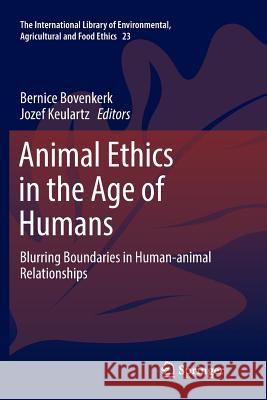Animal Ethics in the Age of Humans: Blurring Boundaries in Human-Animal Relationships » książka
topmenu
Animal Ethics in the Age of Humans: Blurring Boundaries in Human-Animal Relationships
ISBN-13: 9783319830100 / Angielski / Miękka / 2018 / 414 str.
Animal Ethics in the Age of Humans: Blurring Boundaries in Human-Animal Relationships
ISBN-13: 9783319830100 / Angielski / Miękka / 2018 / 414 str.
cena 403,47
(netto: 384,26 VAT: 5%)
Najniższa cena z 30 dni: 385,52
(netto: 384,26 VAT: 5%)
Najniższa cena z 30 dni: 385,52
Termin realizacji zamówienia:
ok. 22 dni roboczych
Bez gwarancji dostawy przed świętami
ok. 22 dni roboczych
Bez gwarancji dostawy przed świętami
Darmowa dostawa!
Kategorie BISAC:
Wydawca:
Springer
Seria wydawnicza:
Język:
Angielski
ISBN-13:
9783319830100
Rok wydania:
2018
Wydanie:
Softcover Repri
Ilość stron:
414
Waga:
0.60 kg
Wymiary:
23.39 x 15.6 x 2.24
Oprawa:
Miękka
Wolumenów:
01
Dodatkowe informacje:
Wydanie ilustrowane











